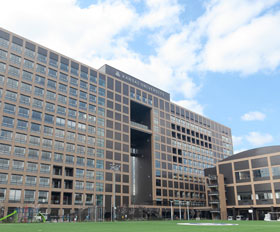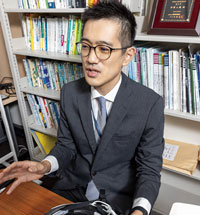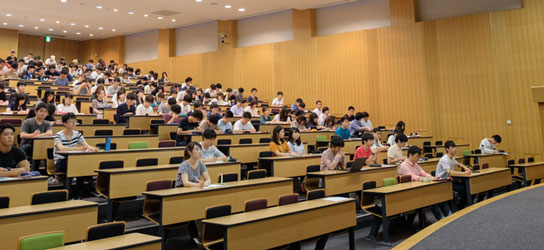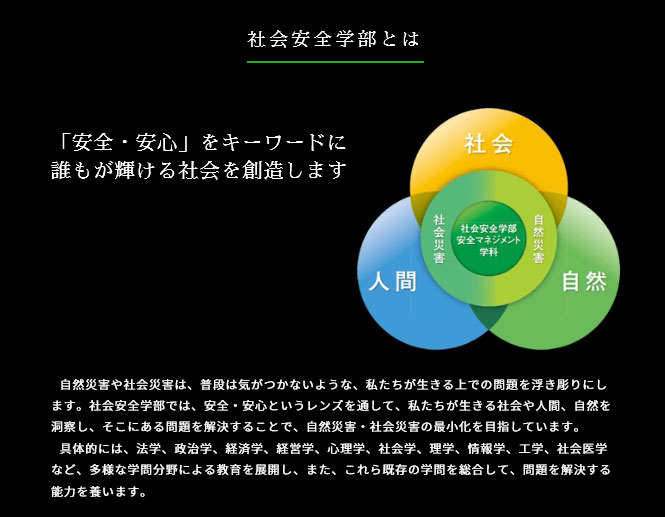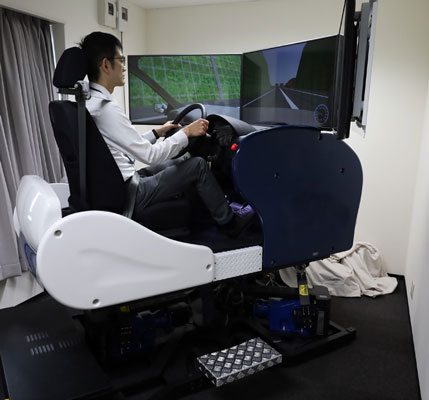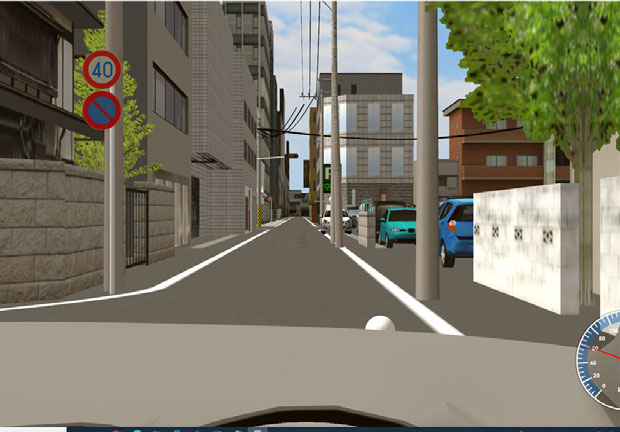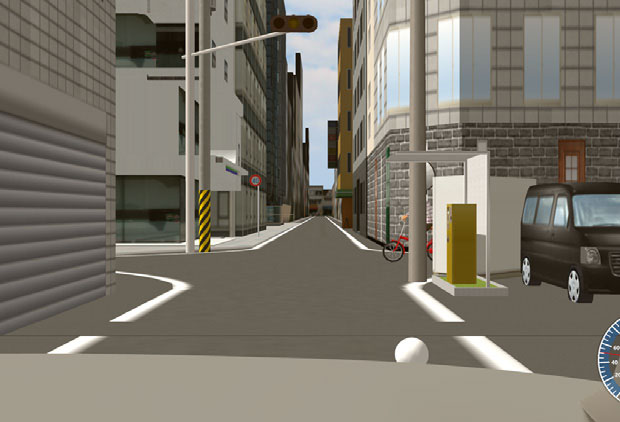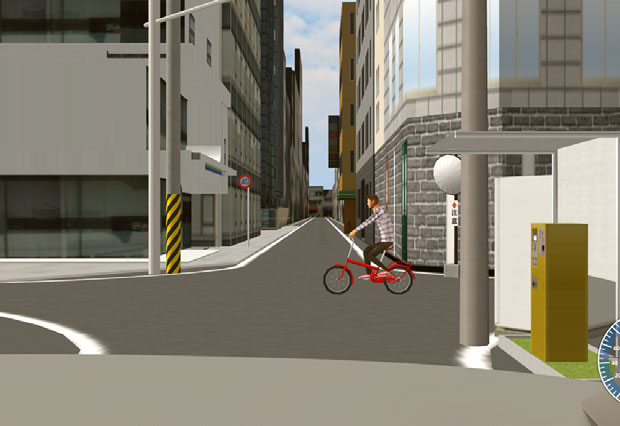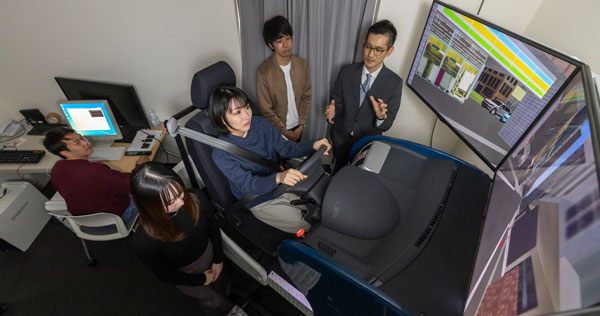|
|||||||||||||
|
|
||||||||||||
|
"A faculty with this name can probably be found in no other universities but here in Japan." Faculty of Societal Safety Sciences, which Associate Professor Ito describes like this, was established in 2010 along with Graduate School of Societal Safety Sciences when the Takatsuki Muse Campus was newly opened. Through research and education widely targeting "natural disasters" and "social disasters" that are human disasters, the mission of the Faculty is to contribute to building a safe and secure society by solving related problems, preventing disasters, and minimizing damage. It covers a wide range of fields, including disasters such as earthquakes and typhoons, diverse types of accidents, infectious diseases, and information security. For this reason, we have established a system that allows students to cross the boundaries of humanities/arts and sciences (integration of humanities and sciences) and learn existing academic fields in a cross-sectional way. From the third year onwards, each student can choose his or her own special field of study from a variety of seminars in the humanities/arts and sciences. Besides, there is an open atmosphere among the supervisors (according to Associate Professor Ito), which also fosters a mutual influence on each other's efforts.
Exploring Measures to Mitigate Damage from Traffic Accidents by Making Full Use of a Variety of Techniques from a Mechanical Point of View "I have a mechanical background, so my basic stance (also regarding social disasters) is from viewpoints of mechanical engineering and mechanics." “Ito Seminar”, led by Associate Professor Ito, focuses on traffic safety, injury biomechanics, and product safety as the main research objects. There, computer simulations (FEM, VR, etc.) are used to examine the behavior of car occupants, pedestrians, and cyclists in the event of a car crash and the mechanism that results in injury. In addition, various methods have been actively adopted as necessary, such as accident investigation to investigate the cause of traffic accidents and the use of DS for driver behavior analysis. The seminar was established at the same time as Associate Prof. Ito took the current position in April 2020. Prior to this, he was an assistant professor at the Graduate School of Engineering, Nagoya University, and initially analyzed the prefectural police data in a project of Aichi Prefecture. After that, with the aim of knowing more about "what was actually happening" at the accident site, he analyzed the individual accident situation in detail based on the videos of the drive recorders recording the accident scenes with the cooperation of a taxi company in the prefecture. Gradually, the scope of research expanded from car-to-car to car-to-bicycle and car-to-pedestrian. In addition, in order to find out "What kind of person who is careful about what kind of things could have avoided that accident?", the actual accident situation, including the road environment, was reproduced using VR and developed into an experiment using DS (also UC-win/Road DS) owned by the university. The research has included a series of DS experiments focusing on collision safety, such as driver responses to avoid a right-angle collision between a car and a bicycle (encounter accident). Kansai University is working on a broader research approach, including a questionnaire survey on the possibility of occupational drivers with diseases returning to work, in addition to the areas with weights placed on the mechanical engineering. Use of UC-win/Road DS and Expanding Research Development When he joined the project of examining "what to do about the driving aptitude test as advanced safety technologies are increasingly introduced into automobiles" (in 2020-2021 by National Agency for Automotive Safety & Victims’ Aid (NASVA)) with several faculty members of Faculty of Societal Safety Sciences, Associate Professor Ito, who was just arrived at his post, was in charge of accident analysis and verification by DS experiment. Specifically, while showing hypotheses based on accident analysis, he has been conducting DS experiments in examining changes in the driver’s alert behavior when various advanced safety technologies such as the Advanced Emergency Braking System (AEBS) and the lane departure warning system are applied, accident forms that may be reduced by applying these technologies, and possibility of new accident form to be caused. The Faculty introduced UC-win/Road DS in 2015, and the Associate Professor resumed using the DS by updating it to the latest version for the project. Since then, he has been using the DS mainly for driving behavior analysis. For example, he conducts experiments to reproduce situations likely to encounter traffic accidents as well as evaluation experiments to see changes in drivers with and without advanced safety technologies (changes in dependence on the technology and or risk alertness). Furthermore, he expressed his idea about the future plans to find out the following issues using DS that reproduces the actual road environment: 1) How careless the driver will become due to the implementation of the technologies, 2) How the technology can assist drivers to become alert faster, and 3) what is the driver's alert level there, etc. He also mentioned the following research development: 1) A mechanism that detects abnormalities such as drowsiness due to long-time driving or illness through biological signals and image recognition and encourages the driver to wake up, or 2) Research on interaction of driving behavior in cooperation with traffic participants of other than cars, such as bicycles, in consideration of utilizing a bicycle simulator. "As I am working in Faculty of Societal Safety Sciences (with a slogan of integration of humanities/arts and sciences), I would like to collaborate with professors specializing in psychology and law and work on a wide range of vehicle safety from before collision to after it." Focus on the rich functions of UC-win/Road DS and seek to create more reality Through the use of UC-win/Road DS so far, including the days of his previous career, Associate Professor Ito evaluates the ease of creating roads and surrounding environments to reproduce the accident situation, and the functionality of the simulator during operation. Although its only less than two years after starting using the current DS and their level of the skill in UC-win/ Road functions is limited, if it is a scenario such as "When the driver’s vehicle comes to a specific point, another vehicle comes out at a specific timing, and automatically the driver’s vehicle brakes accordingly with the advanced safety technologies applied”, it is already possible for them to create VR for simulation by themselves. In the future, he plans to focus on studying, with the aim of mastering the rich functions of UC-win/Road, supporting “SDK,” a development kit for customizing UC-win/Road applications and options for extension of DS, and creating efficient VR through various data linkages. At the same time, if the video image and the movement of the vehicle that are important elements of the system become more realistic, it should lead to the creation of a sense of presence that allows the subjects to be immersed in the feeling of "actually driving", which is Prof. Ito’s ideal, rather than “being experimented". In particular, from the research characteristics based on experiments that reproduce “the situation just before encountering an accident", he is planning to achieve both needs of being "as simple as possible" and "realistic", which are difficult to be compatible. Best Part of Simulation Common to FEM and DS "There are a lot of data that can not be obtained from actual experiments or from the accident site itself (only). I think the best part of simulation is how to visualize and analyze them. This can be said for both FEM and DS." Associate Professor Ito acknowledged the idea that it is of course possible to take an approach in which the computer solves its own problems by itself, in conjunction with software for optimization. However, from the perspective of education, he also pointed out that it is not possible to end with "optimization by drawing lots," as he mentioned at the beginning of this article. Instead, it is important not only in education but also in research and development to look at what is actually happening, in other words, to understand what is actually happening and then develop countermeasures to deal with it. For example, DS acquires data such as "what people are doing while driving" and "how the car moved in response to people's reactions". Based on a thorough understanding of these data, "what kind of safety measures are required" should be shown. Also in FEM, it is necessary to carefully look at "how much force was applied in the target structure" and "how this force will change if countermeasures are taken," and then find out, "What is the correct answer?" or " What is the answer which seems to be likelihood?”. In any case, he believes that the important role of simulation is to lead to the process of thinking.
Photo: Website of Faculty of Societal Safety Sciences, Kansai University |
||||||
| Written by Takashi Ikeno (Up&Coming '22 Spring issue) |
|
|||||
